Post-War West 42nd Street: The Fall Before the Decline
Post-War West 42nd Street: The Fall Before the Decline
- January 3rd
- 12 PM ET
- Webinar
- FREE for Insiders
Explore a forgotten chapter of 42nd Street’s history, when post-war Times Square was a “honky-tonk town,” with the author of Times Square Remade, Lynne B. Sagalyn!
- Explore how cultural change over the landscape of Times Square has been profound but unpredictable
- Uncover the flamboyant characters and outlandish expressions of urban energy that shaped the legend and lore of Times Square in ways beyond the obvious
- Discover why the clean up of West 42nd Street was the longest running joke of New York City politics
- See how popular entertainment in its myriad forms is the DNA of Times Square because people come to this iconic NYC place to enjoy themselves in myriad ways
- Examine the business interests and political agendas that have danced a tango in Times Square for more than a century
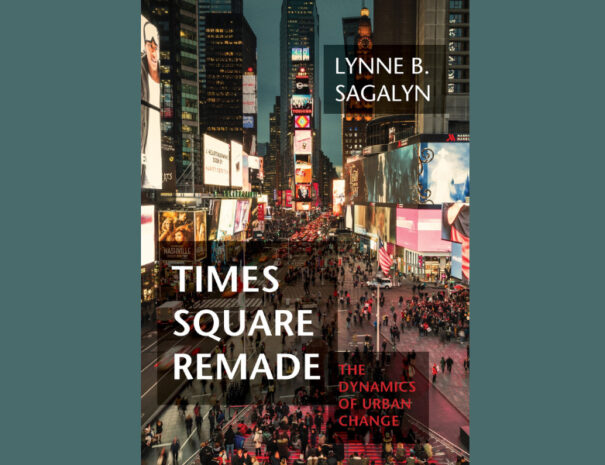
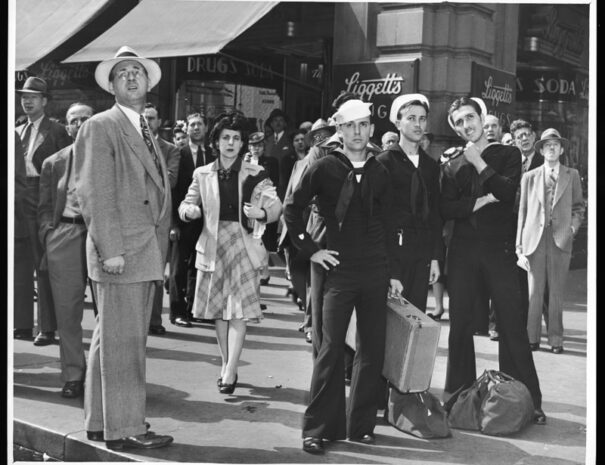
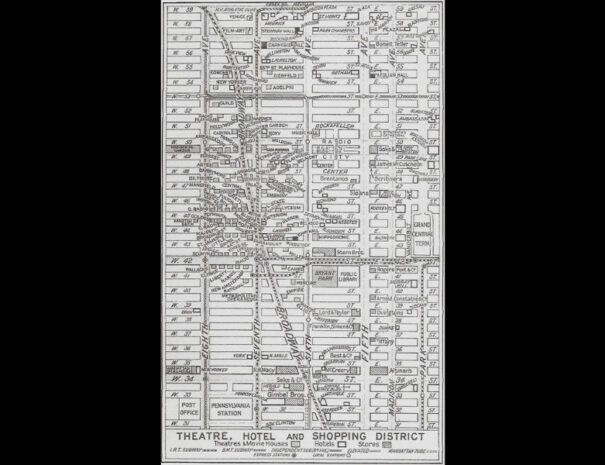
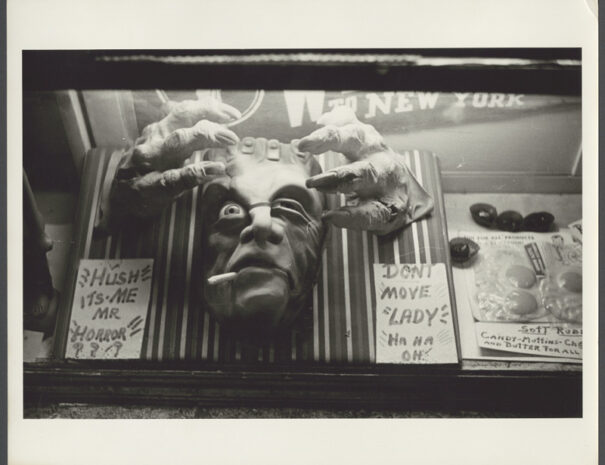
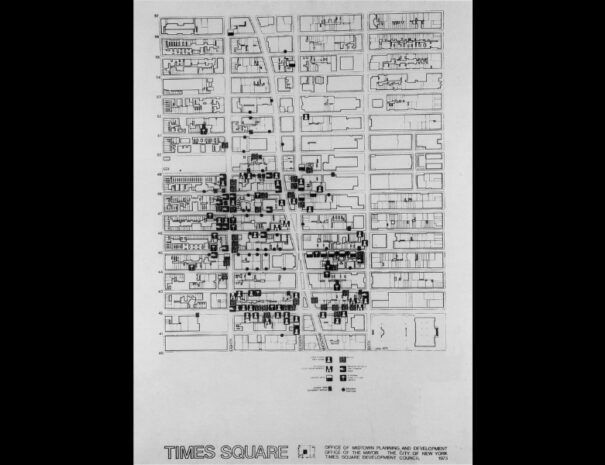
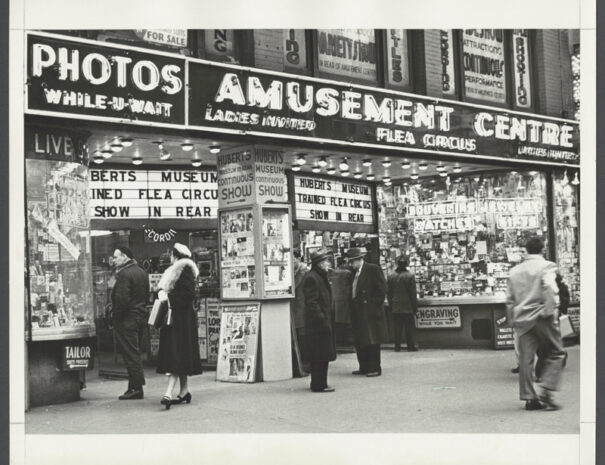
About the event:
For more than a century West 42nd Street and Times Square has been a place of legend and lore. The storylines of its past—fabled Broadway theatrical fare; blazing billboard lights; and galvanizing naughty, bawdy sexual bazaar known as the Deuce—easily come to mind. In the 1990s, the Deuce was swept away by a publicly-driven transformation that replaced the porn (and everything else) with popular mass entertainment and office skyscrapers—now, also a familiar storyline. But missing is the oft-forgotten and fascinating intermezzo—the post-war decade when Times Square was “honky-tonk town,” home to carnivalesque amusements, penny arcades, Hubert’s Museum and Flea Circus, barker auctioneers, and shooting galleries—places of midway fun for pleasure seekers aching for “something for a nickel.” All of which local businessmen, city planners, and government officials deemed a threat to the district’s legendary fame. So, what did these interests do? They set out to regulate the honky-tonk out of existence—to greater or lesser extent. This political drive against honky-tonk was one of a series of proposed clean-ups that never did the trick. However, this mid-1950s effort had an interesting and unexpected impact that shaped the next era on West 42nd Street.
About Lynne B. Sagalyn
Lynne B. Sagalyn is a scholar of urban development and political economy. She is widely known for her work on public/private partnerships, urban finance, and city building, including Times Square Remade: The Dynamics of Urban Change (MIT Press, 2023); Power at Ground Zero: Politics, Money, and the Remaking of Lower Manhattan (Oxford University Press, 2016), regarded as the definitive account of the rebuilding challenge; Times Square Roulette: Remaking the City Icon (MIT Press, 2001); and Downtown Inc.: How America Rebuilds Cities, co-authored (MIT Press, 1989).
She is the Earle W. Kazis and Benjamin Schore Professor Emerita of Real Estate at Columbia Business School, where she taught for twenty-four years, built its well-known MBA Program in Real Estate, and served as founding director of the Paul Milstein Center for Real Estate. She has served on the boards of several real estate companies and is presently a member and chair of the audit committee of Blackstone Mortgage Trust (NYSE: BXMT). On the civic side of professional engagement, she is a board member of the Regional Plan Association (RPA), the Skyscraper Museum (Vice Chair), and the New York City Trust for Cultural Resources (Audit Committee Chair); in addition, she served on the Sunnyside Yards Steering Committee and as a member of the New York City [Board of Education] Chancellor’s Commission on the Capital Plan.
Professor Sagalyn received her Ph.D. from MIT, a Master of City and Regional Planning from Rutgers University, and a B.S from Cornell University with distinction. Prior to her appointment at Columbia Business School, she was on the faculty of the Department of Urban Studies and Planning at MIT, where she taught Real Estate Finance as part of the school’s pioneering degree program in real estate development.
Attendees will receive a link to join the webinar after completing the registration.
Photo Credits
Book Cover image credit: Michael Grimm for Snøhetta
1. Sailors and civilians watching electronic sign in Times Square for news of D-Day invasion, 1944. Credit Fred Palumbo, Library of Congress, Prints and Photograph Division.
2. Times Square Vice Map, 1973. Credit: NYC Office of Midtown Planning and Development
3. Honky-Tonk amusement center, West 42nd Street, 1954. Angelo Rizzuto, Library of Congress Prints and Photographic Division.
4. Times Square Theater District, 1938. Credit: ©️Rand McNally’s Geographic Atlas of Greater New York, 1938, R.L. 91-5-119. from the collection of Charles Knapp (in William R. Taylor, ed. Inventing Times Square, 1991 ©️ Russell Sage Foundation, New York, N.Y.).
5. Times Square—Where you really see anything in a window, 1953. Angelo Rizzuto, Library of Congress Prints and Photographic Division.
How do I sign up for this event?
If you are not an Insider yet, become an Insider today.
If you are an Untapped New York Insiders, simply login to your Insider account using the round icon in the bottom right corner of this screen. Once logged in, clock on the “Book Now” button to book this event for free!
Can’t login to your Insiders account?
Please make sure you are trying to sign in with the correct email address. If you have more than one email address please try logging in with all of them, that will solve this issue 99% of the time. Check out our FAQ for videos and more help documents.
I registered already, how do I join the event?
After signing up for the event, you will receive an email with a link from Zoom. Simply click on this link to join the event! Please check your junk mail if you can’t find your Zoom link.
I missed the event, can I watch the replay?
Yes you can! Simply go to the Video Archive and stream over 100 past webinars, including this one. You will also get a link with the recording of the webinar as soon as it ends
